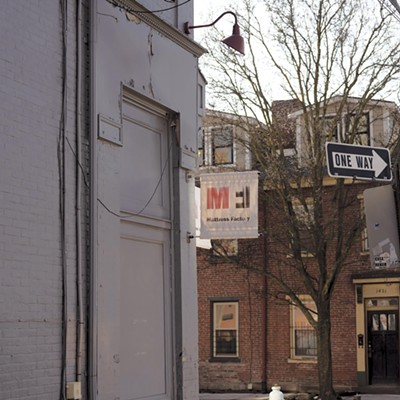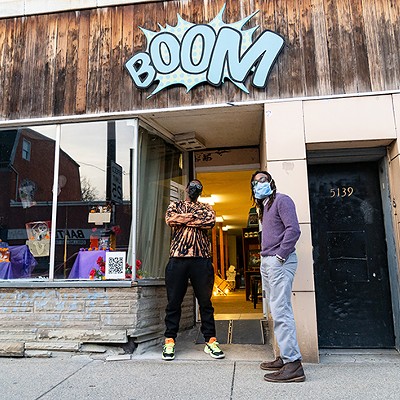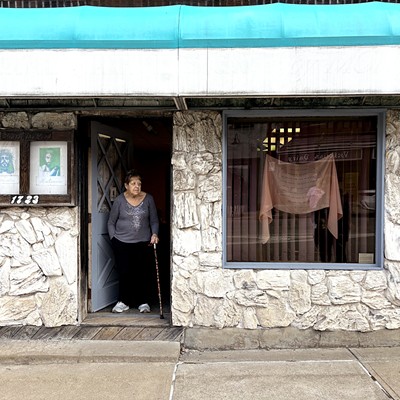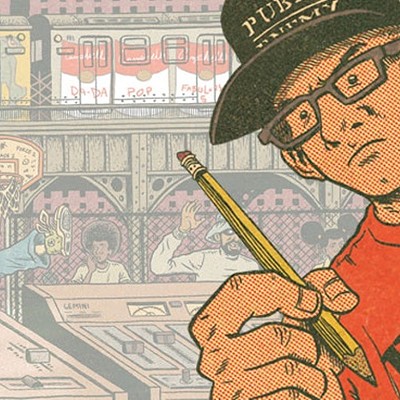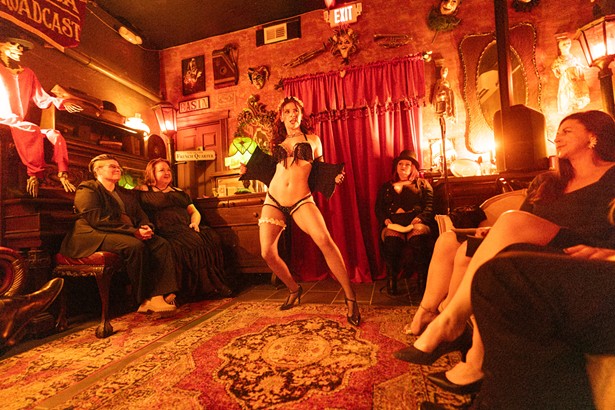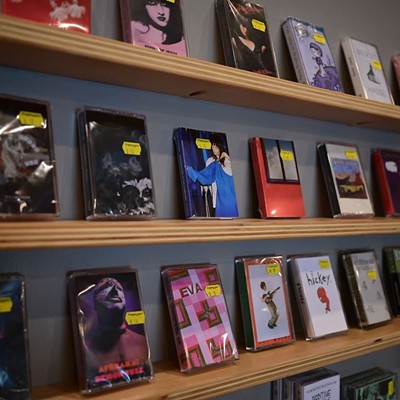The Mattress Factory’s new exhibition, Shrine, is a testament to the power of Black mothers and what they can do when given the structure and support to do what they wish.
Shrine, on view through Dec. 30 at MF’s Monterrey Annex and curated by Jessica Gaynelle Moss, serves as an extension of Pittsburgh artist Alisha Wormsley’s Sibyls Shrine, described as an arts collective and residency program “rooted in radical care, rest and support for Black women, womxn, trans women, and femmes who are m/others and identify as artists, creatives and activists in Pittsburgh and beyond.”
Wormsley tells Pittsburgh City Paper that Sibyls Shrine was born out of need, after a residency program she was scheduled to attend told her they assumed she wouldn’t participate when they found out she was pregnant in 2015.
“I just started to see how people treat mothers, and on top of that, being a Black mother, and raising Black children,” she says. “There are constant limitations placed upon us, you know. So, I started writing about this wanting to call it Sibyls Shrine.”
The first iterations of Sibyls Shrine consisted of around 30 women who were paid a stipend to join the cohort and host workshops about everything from love spells to couponing. After that, another cohort of 30 moms went through the same process, and Wormsley and her collaborators began to narrow down the women who would be featured as a part of the Shrine Artist Residency.
The first person selected was artist Renée Cox, then Naomi Chambers, Mary Martin, LaKeisha Wolf, Wormsley, and sarah huny young were added. These artists created six new immersive pieces for the show, which features work from more than 20 artists, as well as written contributions by poet Camille Posey and janera solomon.
When you first enter the Annex, you are met with the art of Chambers. A banner reads “Mommies vs. Aunties, Everyone Won.” and there is a video of women and families playing a sport. The room is all white, and the floor is lined with different items that add a pop of color. There is a sense of joy to the room, with the laughter from the video in the foreground and the assertion that “everyone won.”
The next room features the art of young. This room is, in a word, immersive. The floor and ceilings are covered with green, fake plants. Shifting from light to emerald green, the colors stay vibrant, and, with minimal light in the room, there is an overall feeling of being lost in a jungle. Lining the walls are altars of six women and femmes. Each altar features a larger-than-life picture of the person along with items like honey, flowers, and stones. It’s a beautiful, enrapturing installation.
Upstairs, in a room painted a shade of turquoise blue, you find the art of Martin, an educator and ceramicist. Martin collaborated with a local metal worker to create stands for some of her gorgeous ceramics, which feature paintings of faces and other objects.
An adjacent, all-black room features Wormsley’s work, with a screen flashing text and videos of Black people. The room has chairs in which you can sit and pull down the built-in “helmet.” Once I pulled down the helmet, an image of a seated Black person flashed immediately before my eyes, with the word “BLACK” imposed over the image. The helmet, which felt like sitting under a dryer, felt very reminiscent of my childhood visits to the hair salon, a source of community and healing for so many Black women and girls. The installation is a very bold celebration of Blackness.
The next two rooms feature the work of Wolf. One room contains a large self-portrait of Wolf, surrounded by altar elements like large crystals, sage, and other items. On the floor, she has placed soil, dried flowers, and stones to create a circular pattern. Circular objects are a theme within the room, representing cycles in the artist’s life. This was one of my favorite rooms because so many of the elements are associated with ways of healing and connecting to the self.
Up another flight of stairs and the final two rooms contain the art of Cox. During my tour, I learned that Cox collaborated with Carnegie Mellon University students, including animators and programmers, to create this exhibit. Cox’s work features video installations of her photography, with images stacked on top of each other and animated. In the final room, there’s a bench toward the back of the room where you sit as the images fly around you. The piece is titled “Soul Culture,” and you can definitely feel it in the art. Having the images form and disintegrate around you was almost dizzying.
Shrine is an impressive display of the creative power of Black mothers, every room containing elements that were immersive and eye-catching. It’s an installation that beckons you to come back for a second or third time, just so you can really see every component of each room. In talking with Wormsley, I felt the importance of a space like this one, a space of creative freedom and community for mothers that are so often ostracized.
Shrine. Continues through Dec. 30. Mattress Factory-Monterey Annex. 1414 Monterey St., North Side. Included with museum admission. mattress.org/shrine-exhibition-overview





